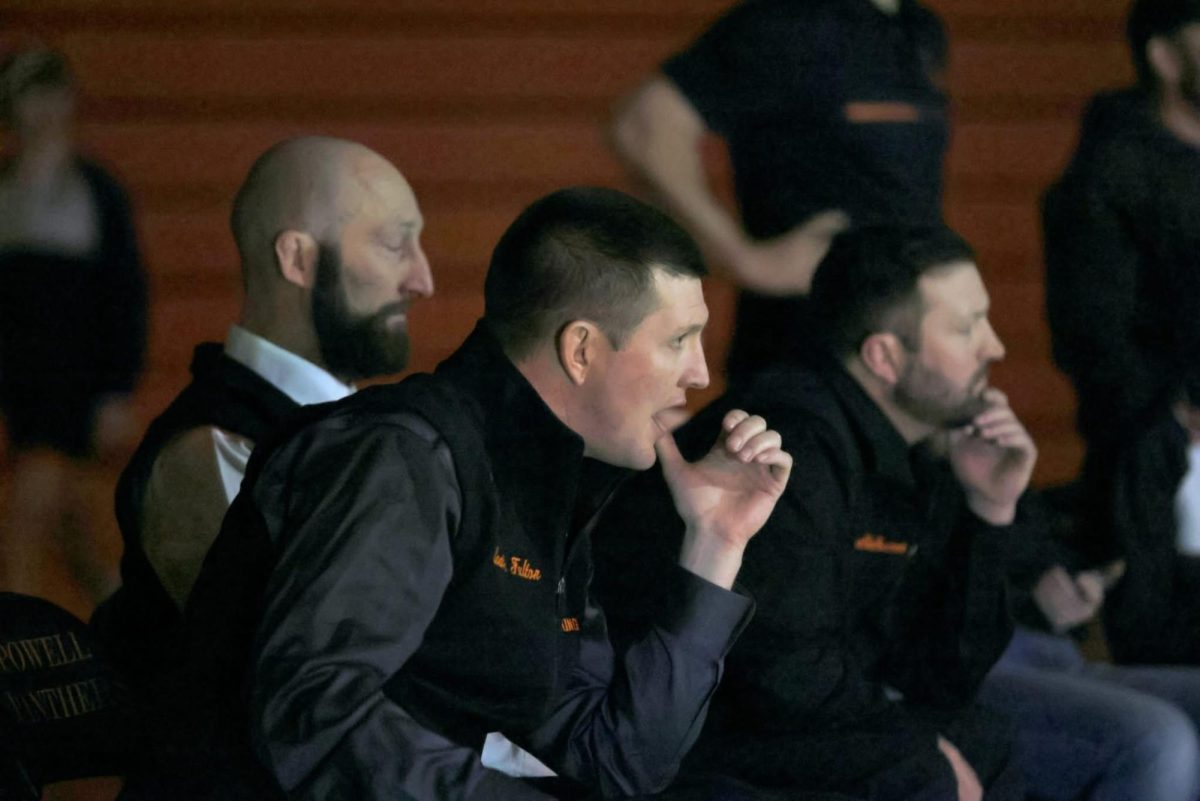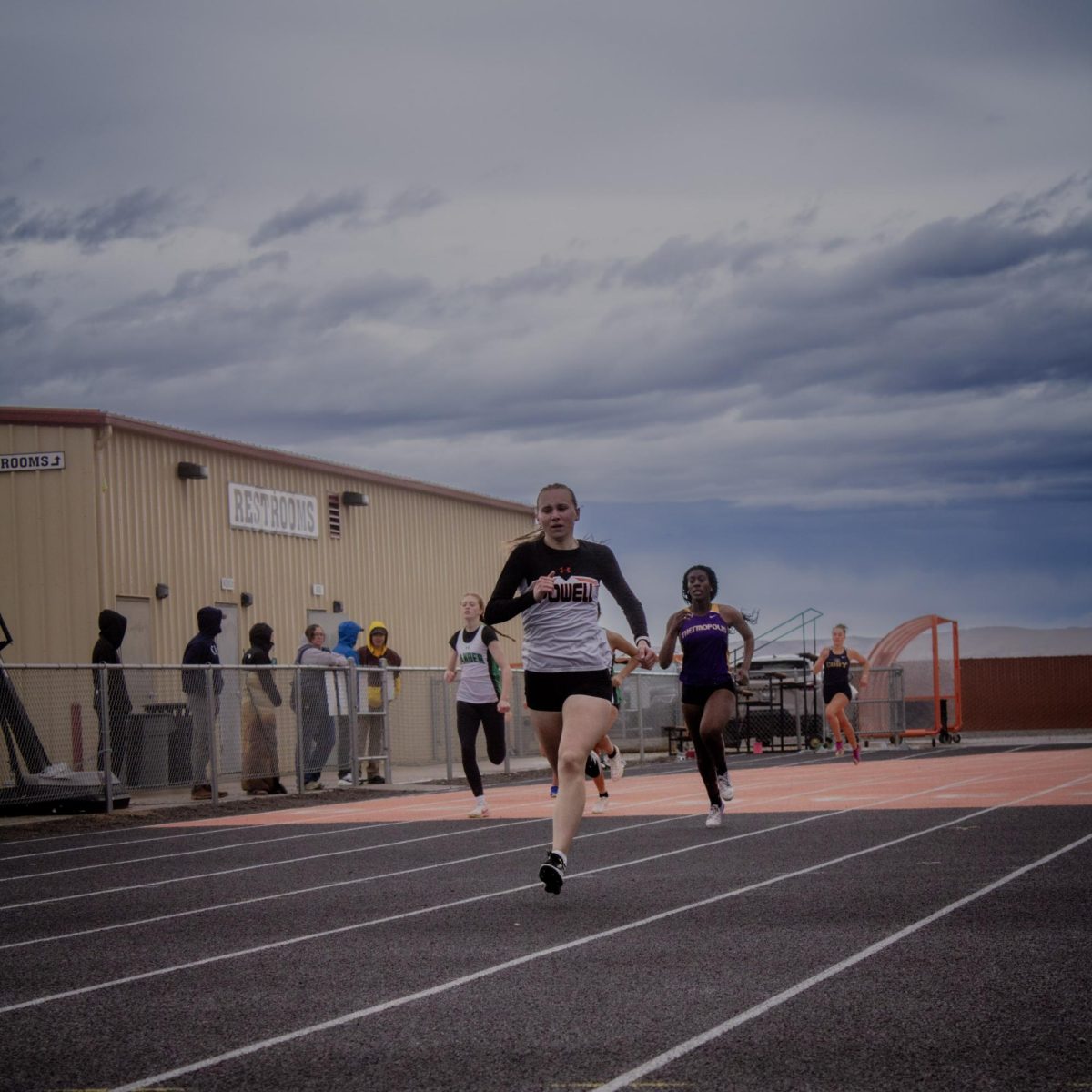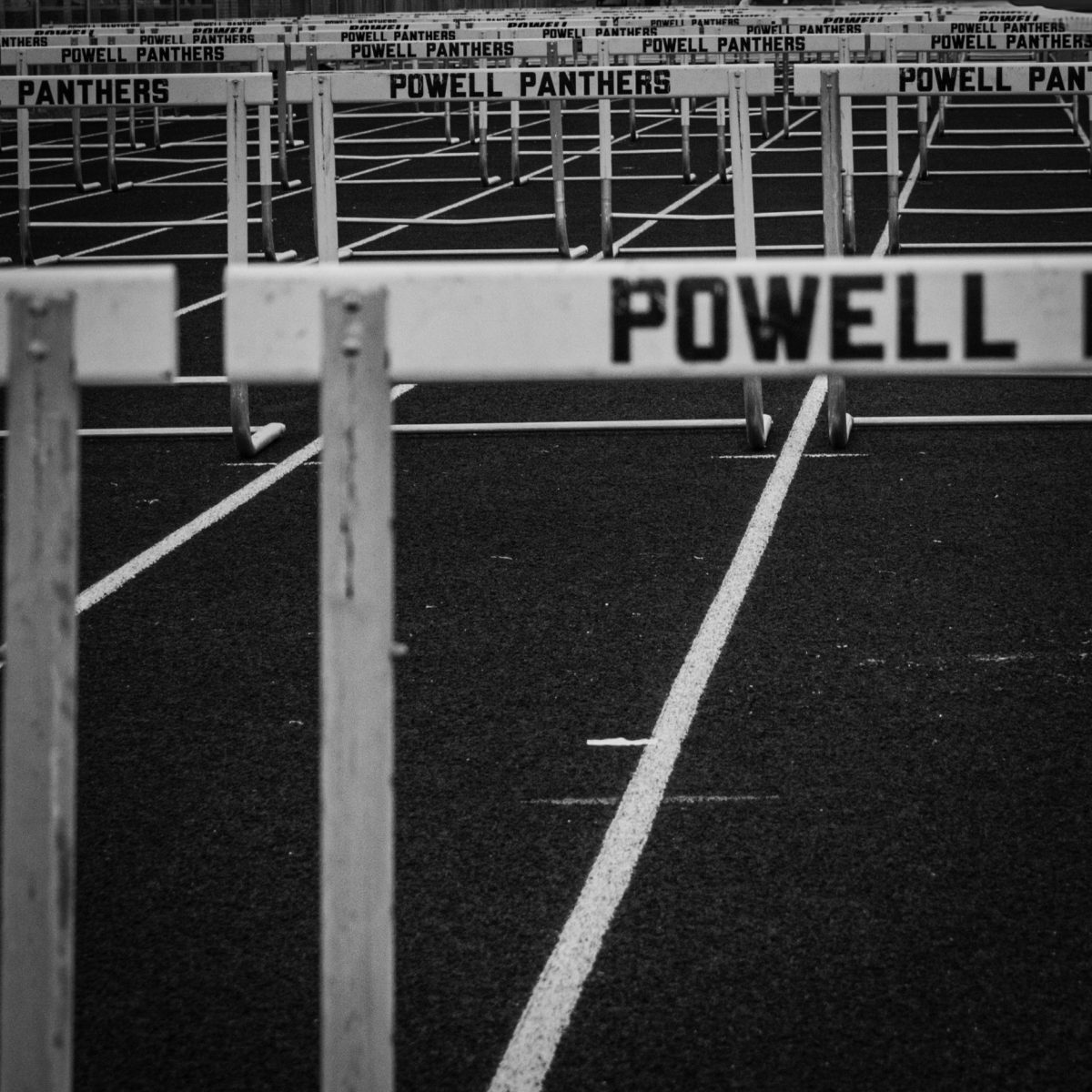RUNNERS GO THE DISTANCE
More stories from Joelynn Petrie
Alan Merritt, Tyler Pfeifer,and Jayden Yates run the mile race at a Worland track meet last spring. Outdoor fitness it one way to keep the mind and body sharp during this non-traditional learning time.
Feet pounding the earth. The never ending cycle of the same rhythm pounding in your head. Looking at the same track over and over and over. Trying to keep your breathing steady and not over exerting yourself.
This is what long distance runners have to deal with and most run multiple races in one day.
How they do it? How do they stand going in circles? They don’t. They run.
There are several components of long-distance running, the main ones being endurance and mental state.
“You need a lot of endurance just because the events are so long that you have to be running at a steady pace all the while trying to get first, that’s your No. 1 goal,” said senior Dylan McEvoy, who has run cross country and distance events on the track.
But perhaps the more important of the two is the psychological stamina.
“I think the most difficult part of distance running is the mental aspect of it,” said senior Alan Merritt, an All-State distance competitor. “Yeah, your body hurts but it takes a lot of mental effort to push through the pain.”
As with any sports, you need to go through proper training and in some cases, eat certain things.
But most long distance runners in track don’t need to watch what they eat.
“I just eat whatever [and] usually within a couple practices, burn it off,” McEvoy said.
Added Merritt: “I use running as a means to justify bad eating.”
Since many don’t need to watch what they eat, there are several ways the long distance runners prepare for races physically.
“In track, we do a variety of workouts, but we always do intervals usually once a week, which is shorter and faster than we normally run,” Merritt said. “We do a lot of reps and that really helps us build our speed and then also once a week we usually do a longer-slower distance to help us build up our endurance.”
From all of this prep and the running, as expected, it can take some tolls on the runner’s body.
Merritt’s resting heart rate is around 40 beats/minute, which is much slower than the average human, according to WebMD. But since he is a long-distance runner, his heart has changed. Instead of sending out multiple short bursts of blood, it can send out a large one and he’ll be fine. The side effects are being cold, poor blood circulation (also could be because he is taller than average) and scaring the crap out of doctors.
On top of changing your body, there are also risks of injury as with any sport.
“It can take a toll on your body,” McEvoy said. “There is always a chance for injuries. I know my sophomore year when I was running I screwed over my knee in cross-country. I know a very common injury is shin splints and I believe that is from not stretching properly.”
Despite the risks and the changes it can bring, many people still love and enjoy running long distance.
“I think one reason I do it is it’s a really great feeling to be in shape and physically you can kinda do whatever,” Merritt said. “Your fitness isn’t a limiting factor so if I want to go and hike up a mountain I can because I am in shape so that’s one of the reasons I like running.
“And then also once you get done with a hard race or a hard workout you can look back and say boy I did something really hard I can be proud of myself for that.”
Not only does it make you stronger and fit, it can provide a great way to spend time with a friend and gives you time to think.
“I just enjoy running long distance, for me it allows me to kinda think,” McEvoy said. “Sometimes it’s just nice to have fun with a friend or something it’s nice.”
Spending time with friends is not a typically reason for starting long distance running. Most start because they want to improve themselves physically.
“I started running in seventh grade. Before that, I could hardly run down the block without getting tired and stopping,” Merritt said. “But then my parents convinced me to just give cross country a try and after a week or two I found that I could actually do really well at it and I started to enjoy it and ever since I really enjoy running.”
Added McEvoy: “So I started, the first time I ran long distance race was when I was in seventh grade for cross country and I fell in love with the sport. I went out for every year for cross country and for all but freshman year for track.”
The reasons people stay with the sport is because they grow to love it and it just becomes a way of life for them. And as with any sport, they want to improve and push themselves harder and faster.
“In track, my goal is to do well at state, so that’s the top couple of places in the mile and two;mile, and then hopefully I would like to break the school record for the two mile,” Merritt said. “The current record is [10 minutes, 4 seconds].”
While Merritt’s goals are more ambitious than most, everyone wants to go faster and beat both personal and big records.
In track, there are multiple long distance events including 800, 4-x 800 meter relay, one mile and two mile.
“For the past couple of years, I have just been doing the mile,” McEvoy said.
“So I do cross country in the fall and that consists of a 5K race, so 3.1 miles and then in track, I do the 4 by 800 meter relay, the 800 meter run mostly just for training and to help boost my speed. My two favorite events are the mile and the two mile,” Merritt said.
For a long distance runner that is a lot. If he were to do all of that at one track meet he would be running 5,800 meters. And he has done it before. How he does it? Training.
“Lots of training helps, you need to be in good shape to do it,” Merritt said. “There have been days I’ve run the three longest events in a single day and it really wears you out, but if you are physically prepared for it you can do it.”
Pretty crazy. But for some that is what they do for fun. For others, running is the bane of their existence. But for these guys. Running is a way of life.



























